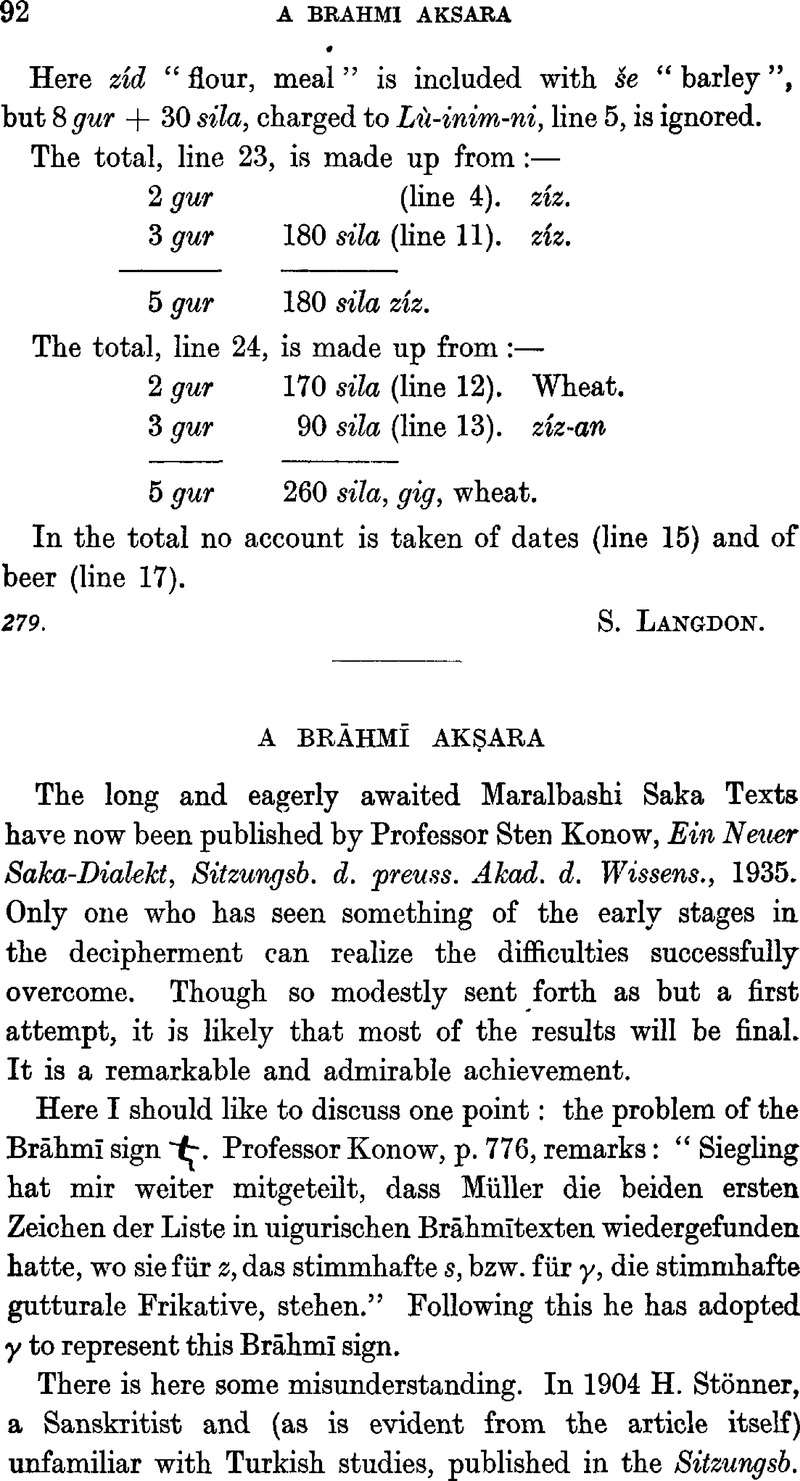Article contents
Abstract

- Type
- Miscellaneous Communications
- Information
- Copyright
- Copyright © The Royal Asiatic Society 1936
References
page 93 note 1 It should be noted in Stönner's list that tarqarquluq has the suffix -quluq, which elsewhere is transcribed -γuhiγ: palatal gülūg (Bang, Ung. Ib., vii, 37). But the suffix lüg is in he Brāhmī script written with the sign under discussion. Hen re we have the significant opposition -luq: lüg.
page 94 note 1 It is not possible in the documents to be certain of the existence of gya, owing to the similarity of such an akṣara to wa. It need, however, mean no more than a second way of expressing palatal g. If wāźdyā were read in place of gyāźdyā, it would be possible to compare Oss. väzdan “nobleman”, Av. vazdah, Paštō wāzda, Parāčī γāzd “fat”, or to think of a short form of Artavazd.
- 1
- Cited by




